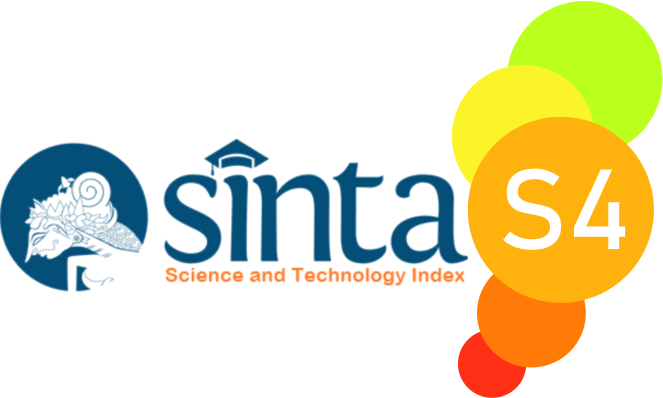ANALYSIS ON EFL LEARNERS’ CAPABILITY IN MASTERING TOEFL TEST ON READING COMPREHENSION
Abstract
This research aimed at knowing learners’ capability in mastering TOEFL test on reading comprehension part for EFL Learners. It was a descriptive quantitative research. It was conducted at the fourth semester students of EFL Learners as the sample of research. The class consisted of 3 classes and the sampling used of this research was cluster random sampling by lottery the class. The sample was class A consisted of 25 EFL Learners. In collecting the data, the instrument was given in the form of reading comprehension of TOEFL test and it was consisted of 50 items dealing with mastering main idea, mastering explicit implicit information, mastering reference, mastering meaning of word, and mastering inferences. After collecting the data, it was analyzed descriptive statistics by operating SPSS 26 for windows to know the mean score of students’ test. The mean score of the test was 32.3. It was categorized into very low. Therefore, the students of EFL Learners had very low capability in answering TOEFL reading comprehension section. Therefore, it is significantly for the students who have low ability in reading comprehension to mastering the strategies in answering the reading test.
References
ETS TOEFL. (n.d). Retrieved April i20, i2021, ifrom ihttps://www.ets.org/toefl.
Fauzi, Y. et al. (2013). Break down soal-soal TOEFL. Bandung: Ruang Kata.
Gay. (2005). Educational Research Competencies for Analysis and Application. New York: McGraw Hill Inc.
Grabe & Stoller (2002). The Purpose of Reading. April 20, 2021, from http://beddebah haterulez.blogspot.com/2012/07/purpose-of-reading.html.
Halim, N., & Ardiningtyas, S. Y. (2018). Difficulties faced by the students in answering toefl test questions. ETERNAL (English, Teaching, Learning, and Research Journal), 4(2), 219–231.
Samad, I. A., Jannah, M., & Fitriani, S. S. (2017). EFL STUDENTS’STRATEGIES DEALING WITH COMMON DIFFICULTIES IN TOEFL READING COMPREHENSION SECTION. International Journal of Language Education, 1(1).
Kate Hardin. (2014). TOEFL Reading Test Example. Retrieved April 20, 2021, from https://magoosh.com/toefl/2014/reading-task-example/.
Klinger, J.K., Vaughn, S. & Boardman, A. (2007). Teaching Reading Comprehension to Students with Learning Difficulties. New York: The Guilford Press.
Manhattan. Retrieved April 20, 2021, from https://www.manhattanreview.com/toefl-paper-sections/.
Rochman, M. (2018). The Importance of Teaching Reading: Improving Students’ Reading Comprehension in EFL Context Emphasized on Reading Fluency And Accuracy. Journey: Journal of English Language and Pedagogy, Vol. 1, No. 11.
Moreilon J. (2007). Collaburative Strategies for Teaching Reading Comprehension. America Library Association: Chicago.
Mousavi, A., et al. (2014). The Effect of Test Preparation on the Test Performance the Case of IELTS and TOEFL BT Reading Test. International Journal of English and Education. Vol.3
Philips, D. (2003). Longman Preparation Course for the TOEFL Test. London: Longman.
Robin. (2013). “What is Language”. Available: http://language.worldofcomputing.net/linguistics/introduction/what-is-language.html.
Copyright (c) 2022 Hizbul Wathoni, Bambang Purnama, Hanofi Harianto, Ari Safar Wadi, Selamet Riadi Jaelani, Bq. Sartika Ningsih

This work is licensed under a Creative Commons Attribution-ShareAlike 4.0 International License.

Journey: Journal of English Language and Pedagogy by http://ejurnal.budiutomomalang.ac.id/index.php/journey/index is licensed under a Creative Commons Attribution-ShareAlike 4.0 International License.






